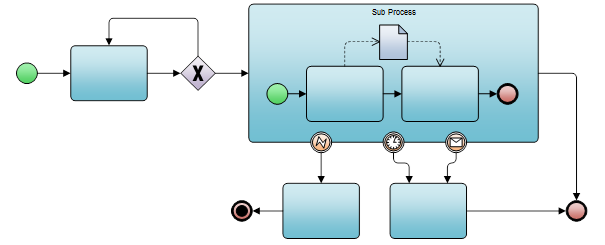What is a Functional Approach?
Organizations (companies) are complex systems that must somehow be deconstructed in order to be manageable. A common way to decompose a company is to divide it hierarchically into functional departments (e.g., sales and production). Such an approach would be described as ‘Functional’ (Figure 1).

Figure 1
In the case of a functional approach, a company is actually hierarchically divided into ‘sub-companies’, each performing a specific function (e.g., sales and production). This offers several benefits, since it divides a big system into smaller systems that are more specialized and easier to manage (as they are less complex).

The major drawback of a functional approach is that a company needs to perform as a whole when producing a specific outcome. In other words, different functional departments have to communicate and collaborate in an efficient and effective way. However, since each organizational department is usually managed vertically (i.e., top-down), responsibilities will be non-transparently divided amongst separate functional units.
Consequently, problems that occur at the interfaces between departments are often given less priority than the short-term goals of the departments themselves. This leads to little or no improvements for customer-facing aspects, as actions are usually focused on departmental functions rather than those which offer benefits to the organization as a whole.
It is also worth keeping in mind that end customers and their requirements are not always visible to all departments (i.e., Sales typically has contact with customers, whereas Production does not).
What is a Process Approach?
In contrast to a functional approach, a ‘Process’ approach does not divide a company into smaller concepts (a top-down approach), but instead defines the ways (i.e., processes) in which particular services or products are developed. This means that a process approach connects different organizational functions to produce a specific outcome.
Graphically, a process approach is most commonly represented as a horizontal cross-section of organizational functions (Figure 2).

Figure 2
Each organization runs many processes, which are typically divided into Managerial, Production, and Supporting processes. The application of a system of organizational processes, together with the identification, interactions, and management of these processes, can be referred to as a ‘Process’ approach.
The processes are managed as a ‘System’ by creating a network of processes and understanding their interactions. The consistent operation of this network is commonly referred to as the ‘System’ approach to management.
A process approach is a common way of improving the performance of an organization.
What Benefits Does a Process Approach Provide?
A process approach offers several benefits when compared to the traditional, functional approach:
- It focuses on integrating, aligning, and linking processes and organizational functions effectively to achieve planned goals and objectives.
- It allows an organization to focus on improving its effectiveness and efficiency by focusing on end-products and customers.
- It enables and facilitates consistent performance through well-defined workflows which, in turn, provide assurance to customers about the organization’s quality and capability.
- It promotes the smooth and transparent flow of operations and information within the organization.
- It treats processes as valuable assets and focuses on continual improvement of process execution and process outcomes.
- It contributes to lower costs and shorter cycle times through continual improvement and the effective use of resources.
- It facilitates the involvement and empowerment of people and the clarification of their responsibilities while also minimizing the risk of potential conflicts.

The Role of BPMN in a Process Approach:
BPMN plays a central role in a process approach because it enables us to visually represent business processes in a standardized way. It does this by linking different types of organizational assets into a flow of activities that fulfill a common objective, such as providing a product or service to a customer.
Secondly, many BPMN tools support the simulation and analysis of processes from BPMN diagrams, which can be used to improve processes and organizational performance.
Finally, BPMN is executable, meaning that defined business processes can be executed on process engines, enabling the automation of organizational processes.



